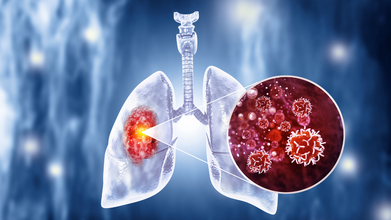- Health Conditions A-Z
- Health & Wellness
- Nutrition
- Fitness
- Health News
- Ayurveda
- Videos
- Medicine A-Z
- Parenting
Still Struggling To Lose Weight After Ditching Junk Food? 5 Reasons Why

Image Credit: Canva
You’ve waved goodbye to cookies, chips, and everything else that comes in a shiny wrapper, but the scale refuses to budge. It can be disheartening when cutting out processed foods doesn’t translate into immediate weight loss.
While eliminating junk food is an essential first step, weight loss often requires more nuanced adjustments. Studies, including a 2019 publication in Cell Metabolism, reveal that processed foods can lead to increased calorie consumption — about 500 extra calories daily compared to whole, unprocessed diets. While cutting out junk food is a commendable step, achieving sustainable weight loss requires a holistic approach.
But sometimes, ditching junk food isn’t enough. Here are five key reasons why your weight loss journey may be stalling, and how you can get back on track.
1. Your Sleep Schedule Is Sabotaging Your Goals
The connection between sleep and weight is often overlooked but crucial. Both too much sleep (over 9 hours) and too little (under 5 hours) can disrupt your body’s production of appetite-regulating hormones, such as leptin and ghrelin. This hormonal imbalance can increase cravings and overeating, particularly for high-calorie foods.
Additionally, poor sleep can leave you feeling fatigued, making it harder to stick to exercise routines.
How to Fix It: Aim for 7–8 hours of quality sleep per night. Establish a consistent bedtime routine and minimize screen time before bed to improve sleep hygiene.
2. Liquid Calories Are Sneaking Into Your Diet
You may have switched to a "healthier" drink lineup, but beverages like fruit juices, sugary coffee drinks, and wine can contain hidden calories that derail progress. Even organic fruit juices, often marketed as healthful, are loaded with sugar and lack the fiber found in whole fruits.
How to Fix It: Stick to water, unsweetened tea, black coffee, or sparkling water. To manage hunger, drink two cups of water 30 minutes before meals—a strategy backed by research in the Journal of Natural Science, Biology and Medicine. Treat calorie-laden drinks as occasional indulgences rather than daily staples.
3. Meal Timing Is Working Against You
When and how often you eat can significantly influence weight loss. Skipping meals can lead to overeating later, while constant grazing throughout the day can result in unnoticed calorie overload.
Studies show that front-loading your calories, with a substantial breakfast and lighter evening meals, promotes greater weight loss. Research published in the journal Obesity found that individuals consuming larger breakfasts lost twice the weight compared to those who favored bigger dinners.
How to Fix It: Stick to eating every 3.5 to 4 hours during a 10–12-hour daytime window. This approach stabilizes blood sugar and encourages fat reserves to be used for energy between meals.
4. You’re Overcompensating for Exercise
Exercise is a cornerstone of weight loss, but it’s easy to overestimate the calories burned and indulge in post-workout treats. That post-spin class protein shake or granola bar may negate your calorie deficit if not balanced within your daily intake.
How to Fix It: Plan snacks strategically. If your workout falls within two hours of a meal, skip the extra snack and refuel during your regular meal. If you need a snack, opt for small, protein-rich options like Greek yogurt or a handful of nuts.
5. Water Intake Is Falling Short
Water plays an underrated role in weight loss. Staying hydrated helps control hunger and reduces the temptation to reach for sugary drinks. Dehydration, on the other hand, can be mistaken for hunger, leading to unnecessary snacking.
How to Fix It: Drink 2–6 cups of water daily to satisfy thirst without adding calories. Carry a reusable water bottle as a visual reminder to stay hydrated throughout the day.
What Other Factors Can Hinder Weight Loss
Sitting for long hours, whether at a desk or on the couch, can slow your metabolism and disconnect your body’s natural hunger cues. Incorporating even short bursts of activity, like three 10-minute walks daily, can reignite your metabolism.
Stress often leads to comfort eating, favoring calorie-dense, nutrient-poor foods. Mindfulness practices, such as meditation or journaling, can help address the emotional triggers behind overeating.
Medical conditions, genetics, or hormonal imbalances can also impede weight loss. If your efforts yield no results, consult a healthcare professional for tests or guidance tailored to your needs.
Weight loss isn’t linear, and small, consistent adjustments are more effective than drastic overhauls. By identifying and tackling these hidden barriers, you can set yourself up for lasting success on your health journey.
Ultra-Processed Diets Cause Excess Calorie Intake and Weight Gain. Cell Metabolism. 2019
Effect of excessive water intake on body weight, body mass index, body fat, and appetite of overweight female participants. J Nat Sci Biol Med. 2014
Childhood Dementia Diagnosis Of A Daughter 'Shattered' Her Father's Life, What Causes This?

Credits: iStock
We often hear of dementia as an adult, or older people's disease, but, a father from Glasgow shares how his four-year-old daughter was diagnosed with the condition. Childhood Dementia news of Darren Scott's daughter was delivered to him like a "complete thunderbolt", he tells Sky News. She was diagnosed with the condition before she turned four. Five doctors were waiting, when Sophia Scott, who had just turned four, were summoned to a Glasgow hospital room. Then came the worst news. Scott was told that his daughter could not live beyond the age of 16. "We were told... there was nothing they could do. It was a moment that broke us, shattered our lives. We have never recovered," he says.
What Is Childhood Dementia?
As per Dementia Australia, childhood dementia is a rare brain condition that affects one in every 2,900 babies globally. Childhood dementia is a group of serious brain conditions that interfere with a child’s memory, behavior, emotions and ability to communicate. It isn’t caused by lifestyle or ageing. Instead, it stems from more than 100 rare genetic disorders that children are born with. These include conditions such as Niemann-Pick type C, Batten disease and Sanfilippo syndrome.
No two children experience childhood dementia in the same way. The illness progresses differently for each child, but one thing remains constant: there is currently no cure. Like adult dementia, childhood dementia is progressive, meaning symptoms worsen over time. Heartbreakingly, around half of all affected children do not survive beyond the age of 10.
What causes childhood dementia?
Childhood dementia is genetic. Globally, about one in every 2,900 babies is born with a condition that can lead to childhood dementia. In Australia alone, an estimated 1,394 children were living with dementia in 2021.
The conditions that cause childhood dementia fall into several categories, including inborn errors of metabolism, lysosomal disorders, mitochondrial disorders, mucopolysaccharidoses, leukodystrophy, neurodegeneration with brain iron accumulation (NBIA), and peroxisomal diseases.
Signs and symptoms to look out for
Symptoms can begin in early childhood or appear much later, sometimes not showing up until the teenage years. The progression may be rapid or unfold slowly over several years, deeply affecting both the child and their family.
Much like adults with dementia, children may struggle with memory loss, confusion, changes in personality, anxiety or fear, and severe sleep disturbances. They may also find it difficult to concentrate, learn, communicate or understand things, and some experience behavioral challenges such as hyperactivity.
In addition, childhood dementia can affect the body beyond the brain. Children may develop problems with their bones or joints, experience issues with the heart, lungs or digestive system, lose their ability to move, see or hear, or have seizures.
As the condition advances, children gradually lose skills they once had — talking, walking, reading, writing and playing. Eventually, the body itself begins to shut down. Without major medical breakthroughs and more research, most children with childhood dementia will continue to face a shortened life, often not surviving beyond their teenage years.
India Faces A Looming Lung Cancer Crisis, Expert Warns

Credits: iStock
India is staring at a sharp rise in lung cancer cases over the next few years, with experts warning that the disease is no longer confined to smokers alone. A recent study published in the Indian Journal of Medical Research projects a significant increase in lung cancer incidence by 2030, with certain regions, particularly the North-East, expected to bear a disproportionate burden. Alarmingly, women are showing one of the fastest rises in new cases.
At a time when the country is on the brink of what researchers describe as a “tsunami” of lung cancer cases, doctors stress that public awareness, early detection, and breaking long-held myths are more important than ever.
Lung Cancer Is No Longer Just a Smoker’s Disease
Lung cancer has long been associated almost exclusively with smoking, but experts say that narrative is outdated. Speaking to The Times of India (TOI), Dr Arun Kumar Goel, Chairman – Surgical Oncology at Andromeda Cancer Hospital, Sonipat, explained that while smoking remains the biggest risk factor, non-smokers are increasingly being diagnosed with the disease.
“Air pollution, indoor cooking smoke, passive smoking, radon gas exposure, occupational hazards like asbestos, and even family history can contribute to lung cancer,” Dr Goel explined. He added that adenocarcinoma, a subtype of lung cancer, is particularly common among non-smokers and appears to be linked more to environmental and genetic factors than tobacco use.
Early Symptoms Are Easy to Miss
One of the biggest challenges with lung cancer is that its early symptoms are often vague and easily mistaken for common respiratory problems. Dr Goel told TOI that persistent cough, changes in cough pattern, coughing up blood or mucus, unexplained chest pain, breathlessness, fatigue, and sudden weight loss are warning signs that should not be ignored.
“In India, lung cancer symptoms often overlap with illnesses like tuberculosis, which leads to delays in diagnosis,” he said. As a result, many patients only seek medical help when the disease has already progressed to an advanced stage.
What a Diagnosis Changes Overnight
A lung cancer diagnosis can be life-altering, both physically and emotionally. According to Dr Goel, patients are suddenly faced with difficult treatment decisions, ranging from surgery and chemotherapy to radiation or targeted therapy. Physical symptoms such as breathlessness and exhaustion can significantly affect daily life.
Emotionally, patients may experience shock, anxiety, fear about the future, concerns for their families, and a loss of independence. “Support from medical teams, counselling services, and loved ones plays a crucial role during this period,” he said.
The Biggest Myth That Delays Care
The most damaging myth, experts say, is the belief that lung cancer only affects smokers. Dr Goel warned that this misconception often results in non-smokers dismissing symptoms or doctors delaying screening. “Anyone can develop lung cancer, regardless of smoking history,” he said.
Early Detection Can Save Lives
If there is one message the public should remember, Dr Goel said, it is that early detection can dramatically improve outcomes. Persistent cough lasting several weeks, unexplained breathing difficulties, or ongoing chest discomfort should prompt immediate medical attention.
“Recognizing symptoms early and seeking help can change the course of treatment and significantly improve quality of life,” he said.
Face Masks Are 'Inadequate', Says WHO, Must Be Swapped For Respirators

Credits: iStock
Face masks are not adequate when it comes to protection against flu-like illnesses, including COVID, said the World Health Organization (WHO) guidelines. As the number of flu cases rise in the US and the UK, this WHO guideline, may be of use. The guidelines noted that the surgical masks worn by doctors and nurses, when they are face to face with a patients are no longer providing the protection, and must be replaced with respirators.
The guidelines noted in a letter to the WHO chief Dr Tedros Adhanom Ghebreyesus, noted there is “no rational justification remaining for prioritizing or using” the surgical masks that are ubiquitous in hospitals and clinics globally, given their “inadequate protection against airborne pathogens”. “There is even less justification for allowing healthcare workers to wear no face covering at all,” the letter read.
When COVID was at its peak, an estimated of 129 billion disposable face masks were being used around the world every month. These were used by the healthcare workers as well as general public. These surgical masks were most widely available and recommended by most health authorities during that time. However, respirators were then designed to filter tiny particles. Then came the masks FFP2/3 standards in the UK or the N95 in the US. Evidence also supported that many countries are switching to these masks and that they are more effective. This resulted in fewer infections in patients and health professionals, as well as reducing the rate of sickness, and burnout of the healthcare professionals.
What Is The Key Difference Between Respirator and Surgical Mask?
Face masks are loose in fitting and are designed for one-way protection. It protects others from coughs and sneezes. WHO recommends a three-layer mask when people cannot socially distance. However, not all face masks have a safety rating.
The respirators on the other hand has a tight fitting, which creates a facial seal and filters both inflow and outflow of air. It tightly covers the nose and the mouth. It also removes 94% of all particles that are 0.3 microns in diameter or larger. It is also designed to protect the wear up to the safety rating of the mask.
COVID - Airborne or Not?
The WHO has faced criticism for its delayed acknowledgment of Covid-19’s airborne transmission. The letter urges the agency to reassess its earlier position and clearly communicate to the public that the virus spreads through airborne respiratory particles.
Professor Trisha Greenhalgh of the University of Oxford, a signatory to the letter whose research is widely cited in it, said that infection occurs only when germs enter the body. She explained that respirators, which seal tightly against the face, force air to pass through high-grade filters that block airborne pathogens. In contrast, she noted, medical masks fit loosely and allow significant air leakage.
Supporters of the letter include members of the World Health Network, leading US epidemiologist Eric Feigl-Ding, and Guardian columnist George Monbiot.
Responding to the letter, a WHO spokesperson said it would undergo “careful review.” The spokesperson added that the organization consults experts across diverse health and economic settings when developing guidance on personal protective equipment for healthcare workers, and that its Infection Prevention and Control guidelines for epidemic- and pandemic-prone respiratory infections are currently under review in light of the latest scientific evidence.
© 2024 Bennett, Coleman & Company Limited

